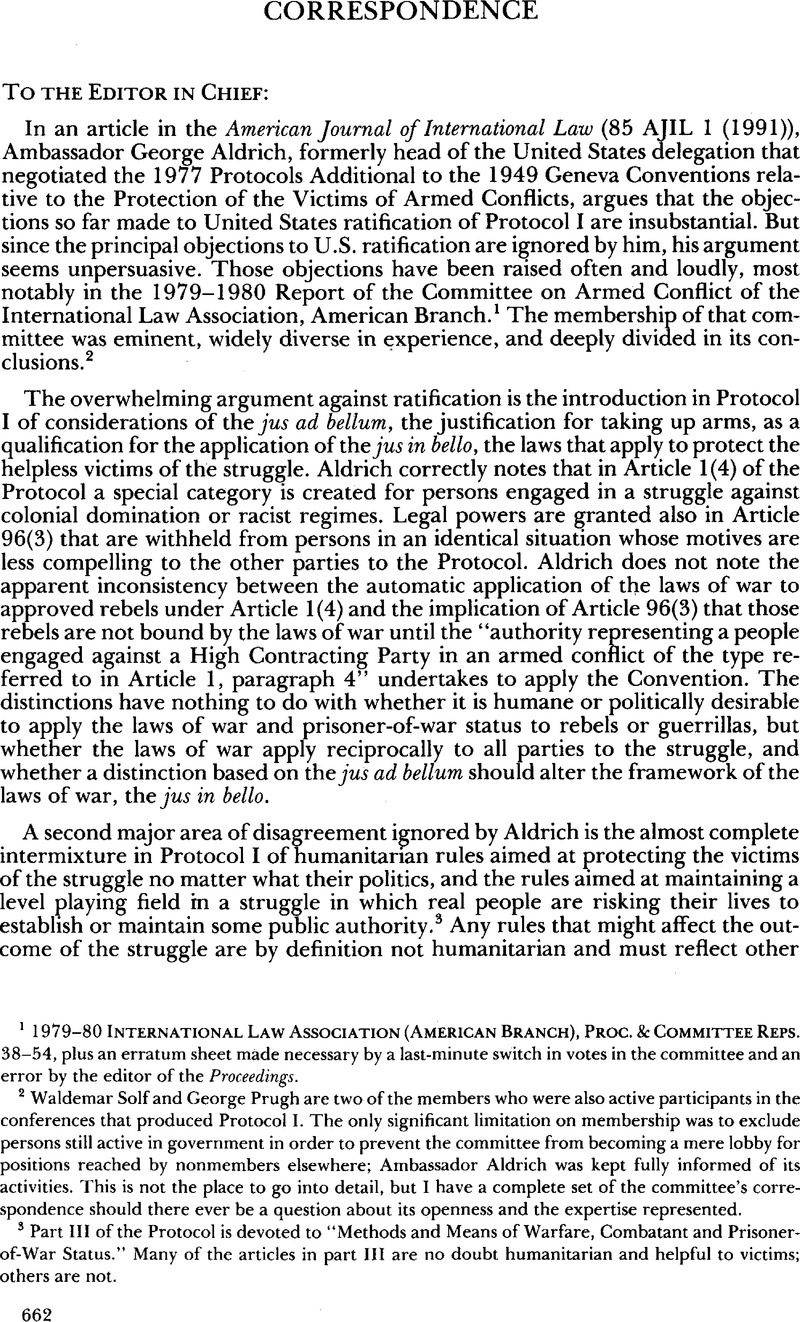No CrossRef data available.
Published online by Cambridge University Press: 27 February 2017

1 1979–80 International Law Association (American Branch), Proc. & Committee Reps. 38–54, plus an erratum sheet made necessary by a last-minute switch in votes in the committee and an error by the editor of the Proceedings.
2 Waldemar Solf and George Prugh are two of the members who were also active participants in the conferences that produced Protocol I. The only significant limitation on membership was to exclude persons still active in government in order to prevent the committee from becoming a mere lobby for positions reached by nonmembers elsewhere; Ambassador Aldrich was kept fully informed of its activities. This is not the place to go into detail, but I have a complete set of the committee’s correspondence should there ever be a question about its openness and the expertise represented.
3 Part III of the Protocol is devoted to “Methods and Means of Warfare, Combatant and Prisoner-of-War Status.” Many of the articles in part III are no doubt humanitarian and helpful to victims; others are not.
4 SC Res. 661, para. 3(c) (Aug. 6, 1990). The exclusion of “supplies intended strictly for medical purposes, and, in humanitarian circumstances, foodstuffs” appears not to have been applied consistently; nor is it clear what foodstuffs were believed not to involve “humanitarian circumstances.” Under Article 54 of Protocol I, there are other limits placed on starvation as a method of warfare that appear to have been ignored by the Security Council.